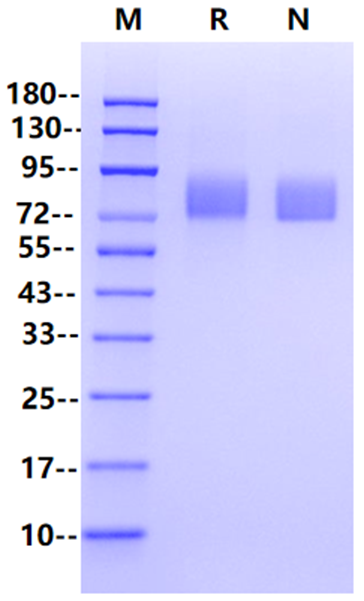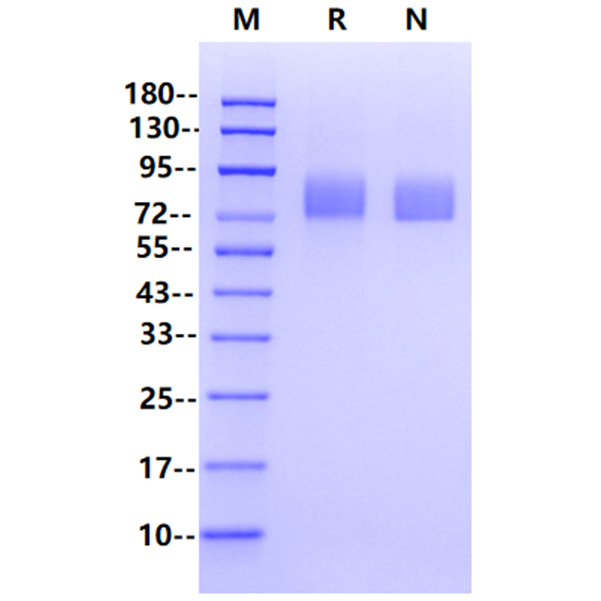Product Details
Product Details
Product Specification
| Species | Mouse |
| Synonyms | BB2, ICAM1, CD54, P3.58 |
| Accession | P13597-1 |
| Amino Acid Sequence | Gln28-Asn485, with C-8*His |
| Expression System | HEK293 |
| Molecular Weight | 72-95kDa |
| Purity | >95% by SDS-PAGE |
| Endotoxin | <0.1EU/μg |
| Conjugation | Unconjugated |
| Tag | His Tag |
| Physical Appearance | Lyophilized Powder |
| Storage Buffer | PBS, pH7.4 |
| Reconstitution | Reconstitute at 0.1-1 mg/ml according to the size in ultrapure water after rapid centrifugation. |
| Stability & Storage | · 12 months from date of receipt, lyophilized powder stored at -20 to -80℃. · 3 months, -20 to -80℃ under sterile conditions after reconstitution. · 1 week, 2 to 8℃ under sterile conditions after reconstitution. · Please avoid repeated freeze-thaw cycles. |
| Reference |
1、Gu H F. et al. (2013) Association of intercellular adhesion molecule 1 (ICAM1) with diabetes and diabetic nephropathy. Front Endocrinol. 3: 179. 2、 Williams M R. et al. (2013) ICAM1 ligation‐induced transmigratory complex formation regulates leukocyte transendothelial migration. FASEB J. 27(S1): 57.5-57.5. |
Background
ICAM-1 is a cell surface glycoprotein expressed at a low basal level in immune, endothelial (EC) and epithelial cells, but is up-regulated in response to inflammatory stimulation. The function of ICAM-1 has been best studied in leukocyte transendothelial migration (TEM), where ICAM-1 regulates leukocyte rolling and adhesive interactions with the vessel wall, and guides leukocyte crossing of the endothelial layer. More recently, functional studies identified several new roles of ICAM-1 in epithelial injury-resolution responses, innate and adaptive immune responses in inflammation, and tumorigenesis.
Picture
Picture
SDS-PAGE

2μg (R: reducing conditions, N: non-reducing conditions).


